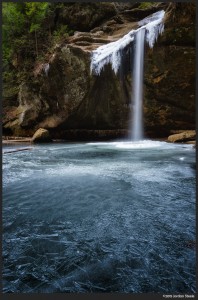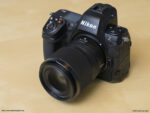Image Quality
Dynamic Range and Color

The A7II features a largely unchanged 24 megapixel full-frame CMOS sensor that first appeared in the original A7. Minor modifications include the additional phase-detect autofocus sites and a somewhat redesigned sensor stack that reduces reflections off the sensor vs. the A7 (which occasionally had issues with sensor reflections showing in images). As a result, the overall image quality from the A7 II is extremely similar to the A7, and that’s just fine.
The A7II produces images with wide dynamic range that can capture the brightest brights and the darkest darks in all but the most demanding scenes. The bracketing options on the camera may make it easier to do HDR photography, but for most shooting, that’s an unnecessary step. The beautiful tonality to the images that was present in the original A7 is still on display here, with a gentle rolloff from light to dark that gives a simply gorgeous look to the images.
The A7 II also has excellent color response and color depth, yielding rich files that display a subtlety that is difficult to get without a big full-frame sensor. If you are a RAW shooter, you will find really nothing to complain about the A7 II with regards to dynamic range and color.
Noise and Detail
As with other imaging characteristics, the A7II has excellent control of noise at higher sensitivities. The camera is capable of low levels of noise through ISO 3200 and images are easily usable for moderate size prints up to 12,800. ISO 25,600 is usable for small prints and web use, but does display a fair bit of noise at this ISO. The level of detail remains very high when shooting at higher sensitivities, which makes any residual noise a non-issue. The excellent noise performance combined with the high quality in-body stabilization makes the A7II one of the best cameras around for shooting in dim light while handheld.
Overall detail levels from the camera are also excellent. The sensor does have an anti-aliasing filter, but it’s not particularly strong. Images at low ISOs display a wealth of information and fine detail, even in the shadows and highlights.

JPEG Image Quality
I am predominantly a RAW shooter, but if you read my review of the A7 last year, you will know that one of the few things I thought the camera failed at was JPEG output. The JPEGs out of the original A7 were, in a word, atrocious, especially at high ISO. They had artifacts and terrible compression, making the images look like they’d been taken with a camera from 2003 rather than 2013. Thankfully, Sony has dramatically improved the JPEG image quality with the A7 II.
While Sony still doesn’t produce the best JPEGs in the industry (a nod I give to both Fuji and Olympus), the A7 II produces JPEGs with far less artifacts than the first generation of the camera. Tonality and color are quite good and the blotchy mess that was created at high ISO is now much more natural. That said, Sony is still too heavy handed with the noise reduction in JPEG mode, which does remove a notable amount of detail from the images compared to the excellent RAW files. So while the JPEG output is still only ‘OK’, it’s a massive improvement over the terrible JPEGs of the original A7.
Video
As I mentioned in my little disclaimer note at the beginning of the review, I am not a videographer, and I don’t feel comfortable going in-depth on the video features. That said, the limited video I did shoot looked outstanding. The camera is capable of 50Mbps 1080/24p video, with full manual exposure control and continuous autofocus. The in-body stabilization also works in video mode and does a very nice job at keeping the video still, even with non-native manual focus lenses.





Leave a Reply